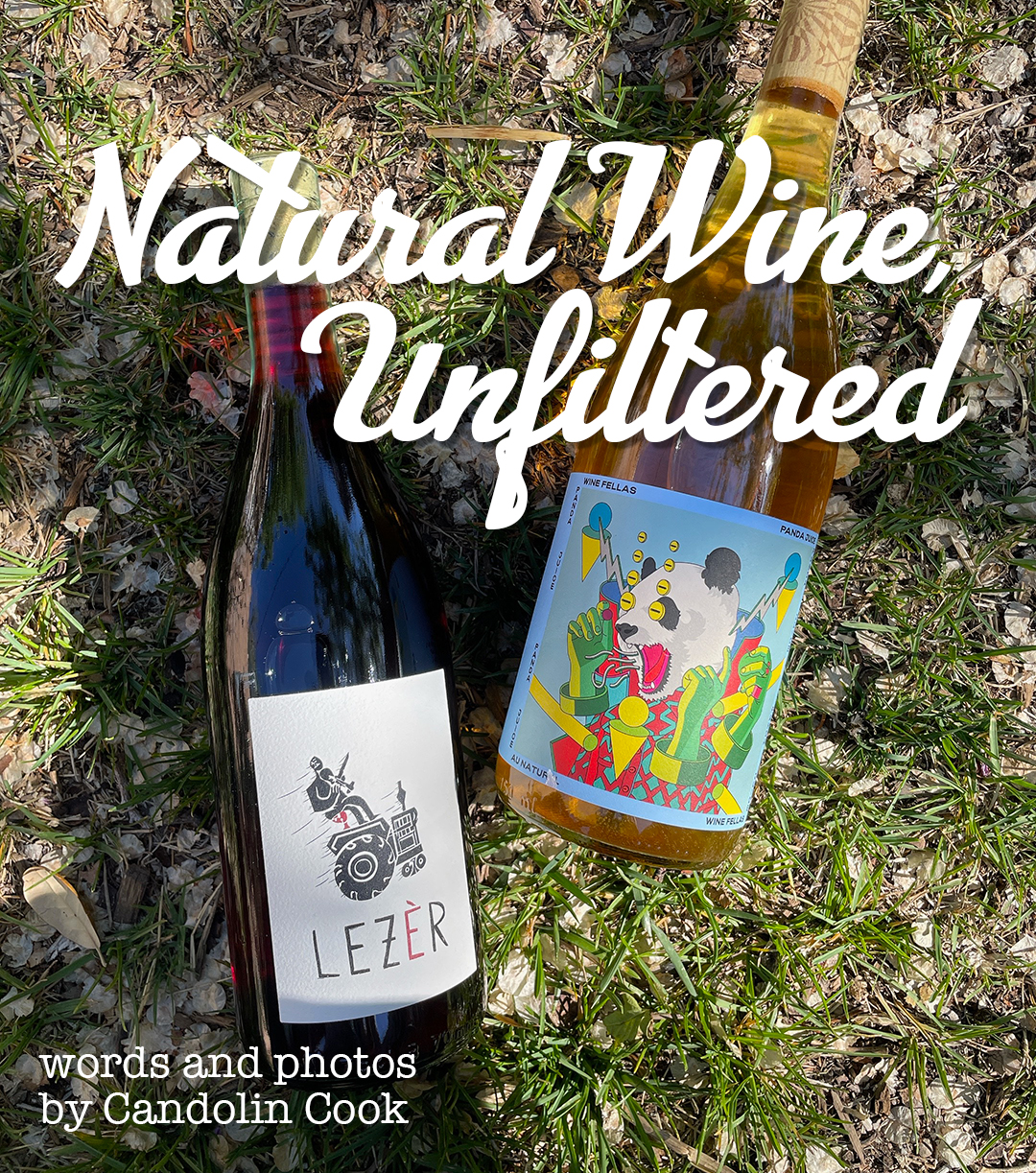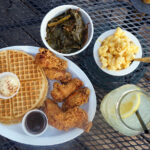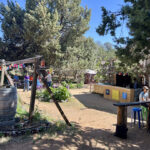#101 | Wine, Wine, Wine!
We once met a French empiricist who held that French wines were the best, and the best wines were French. (For the record, he conceded that it was possible to buy superior bread in the US.) We don’t know how much wine this scholar consumed over the course of the research informing his conclusion (there are more than 360 appellations in France alone), or whether he continues to hold that opinion today. But his assertion came to mind while considering a related question: How much wine is too much?
This is a question that France has been grappling with lately (and, apparently, for decades, if not millennia). Once upon a time, the average French person drank approximately 181 bottles of wine per year, or 3.5 bottles per week; nowadays, that imaginary person drinks but a bottle per week. There’s more math to be done here, but the numbers that have people’s attention are these: in June, France spent $172 million dollars destroying 80 million gallons of wine, and they’re about to distill even more to make room for this year’s juice. They’re not distilling like Caley Shoemaker, who learned how to turn wine into vodka back when she was managing shop at Hangar 1; these millions of gallons of wine, mostly red, many Bordeaux, some vin du pays, are being distilled into rubbing alcohol, hand sanitizer, or the base of perfume that, if feelings imbued during the making of things ultimately soak into the people who wear them, will surely lead to heartbreak.
Reasons floated for what has become a recurring practice in France include decreased consumption of red meat, increased divorce, mocktails, a falling out with the concept of terroir, Chile, California, New Zealand, and global consumers without the time or inclination to make sense of the byzantine rules governing France’s appellation system.
Although California has experienced episodic gluts of cabernet sauvignon, New Mexico, where Spanish grapevines were first planted around 1629, has never suffered from a significant wine surplus—maybe because the state produces about 3.4 million liters annually, in contrast to France’s 34+ million hectoliters—but we do think it has terroir. And whereas French growers are asking for help in tearing out vines, last year New Mexico allotted a million dollars to the Vineyard Restoration Fund, which will fund the planting of 400 acres of vines in the state. (In case you’re thinking about changing your life, yes, beginners are eligible for these grants.)

We don’t know how much wine is too much for New Mexico, but we know that we favor smaller wineries over wine factories. Most US wine is produced by less than half a percent of wine “makers” who produce at least 300,000 cases a year (Gallo leads the pack), so by some classification systems, a winery making between ten and fifty thousand cases is small. To us, small is measured partly by care. Vivác Winery produced 97 cases of its pinot noir in 2021; Milagro Vineyards made even fewer cases of the light, dry riesling we recently paired with a bright, funky noodle bowl; and Sheehan Winery made 50 cases of its 2020 Aglianico, to name just a few great local wines made with New Mexico grapes.
By the way, if you like this newsletter, pass it on!

Entrances & Exits
Sentli: Comida Sur-Oeste has been popping up around Albuquerque, and their pepían is obscenely pretty. Sometimes they do guisados with handmade tortillas; sometimes they do rabbit tinga tamales in banana leaves. Whatever the menu of the day, it looks to be all about the masa. Find them Sundays at the Rail Yards Market.
The high-ceilinged space on the ground floor of the Yrisarri Block at Fourth and Central has been sadly empty since Brixens closed shop during the pandemic. Now, though, it bears stickers teasing its new name: Diego’s New Mexican Fusion. Diego’s is advertising itself as an after hours “clubstraunt” that will serve food from 12 to 4—am, that is.
Albuquerque is soon to have its very own Teriyaki Madness franchise. Not having sampled the food at the Seattle-based chain’s restaurants in other states, we won’t weigh in on that, but we will comment that we both agree and disagree with owner Dr. Trang Tran’s assertion to the Albuquerque Journal that “there’s no such thing as passive income.” We suspect that such a thing does exist, but would wager that it’s extremely rare in the restaurant business.
The Melara brothers, a.k.a. those super sweet and hardworking guys who not long ago ran Bumble Bee’s in Santa Fe, have opened their own restaurant, Santa Fe Bees, at the old Taco Fundacion location on Guadalupe Street. The menu includes several taco plates along with pupusas, fajitas for two, a few vegan dishes, and a nice kids menu.
El Farol pizzas are 86’d at the Canyon Road location following complaints from neighbors about the smoke. Instead, the mobile pie shop will offer its goods at Nuckolls Brewing Co. Until now, Tender Fire has been filling the pie gap in the food menu there, but only here and there; El Farol’s truck will take up permanent residence in the beer garden, with hours matching the brewery’s.
Occasions
Where do cultural sustainability and Indigenous food intersect? At Santa Fe’s CCA on September 18, a screening of Indigenize the Plate will help unpack this knotty question as Diné filmmaker Natalie Benally travels to the Andes to learn from the Quechua community there. Benally and producer Ernie Zahn will discuss the film afterward.
Mooncake and gewürztraminer might seem like an unlikely pair, but the two will meet at Alkemē at the end of this month with another Culture-to-Table dinner. This time, the relatively new and much-raved-about source for Asian and Pacific Rim cuisine will offer Alsace wine pairings. The dinner aligns with the Santa Fe Wine and Chile Fiesta weekend as well as with Moon Festival, celebrated across Asia at harvest time.
On September 29, Chef Lois Ellen Frank and Chef Walter Whitewater will be at Collected Works to introduce a new cookbook: Seed to Plate, Soil to Sky: Modern Plant-Based Recipes using Native American Ingredients. In the meantime, check out Frank’s recipe for fried squash blossoms, which was featured along with a few others from the cookbook in our sister mag’s Four Corners issue. (edible New Mexico’s new issue, by the way, is on stands now—find it by the beautiful bees on its cover).
Tickets are on sale for the Santa Fe Farmers’ Market Institute’s Cultivating Community Celebration on October 12 in Santa Fe. Alain Jorand of Adobo Catering (and formerly of Le Pommier, where he schooled one of our writers on sauce) will offer a three-course menu for the event, farm-to-table style, natch. Also, awards will be presented to the Institute’s selections for the 2023 Farmer All Stars.
Distillations
Raw? Traditional? Alive? Whatever you prefer to call natural wines, their consumption is on the rise in New Mexico. In “Natural Wine, Unfiltered,” Candolin Cook demystifies the category and reports on where to find it without traveling to Williamsburg or Silver Lake.
At the very start of this year, leticia gonzales wrote about her conversations with local growers and seed savers in “Local Lexicon of Squash.” If you’re interested in getting serious about seed saving, consider attending the New Mexico State University workshop in Los Lunas this Tuesday, where one of those legendary seedsavers, Brett Bakker, will talk about heirlooms and landraces of the southwestern US. Contact Charles Havlik for more info.
If you ever wondered what would happen if you put the aesthetic assets of Marfa, Oaxaca, Morocco, and Palm Springs in a blender and pressed go, Amanda Tucker of The Mystic claims in this week’s New Mexican that she has one answer for you in her and husband Rick Goldberg’s Cerrillos Road motel and eatery. The Mystic sits beside Jackalope on Cerrillos in the former home of the Silver Saddle, and it offers more than the expected desert-chic decor: they’re looking to fill the late(r)-night dining gap, with food till 10 pm and drinks till 1:30 am on weekends.
Got a tip? Wish we knew about your favorite bakery/brewery/hole-in-the-wall? Give us a shout!








